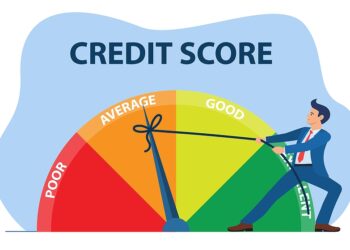In a world filled with economic uncertainty, the concept of financial stability has never been more important. It’s a goal that many people aspire to, yet few truly understand what it means or how to achieve it. Contrary to popular belief, financial stability isn’t about being rich or having a massive bank account. Instead, it’s about having control over your money, gaining peace of mind, and possessing the freedom to navigate life’s challenges without constant stress. It’s the ability to withstand a job loss, a medical emergency, or an unexpected car repair without it derailing your entire life. This comprehensive guide will walk you through the core principles, practical strategies, and essential mindsets needed to build a secure financial foundation that will last a lifetime.
The Foundational Cornerstones of Security

Before you can think about building wealth, you must first establish a solid financial foundation. This involves three critical steps that, when implemented correctly, will act as the bedrock for all your future financial decisions. Ignoring these steps is like trying to build a skyscraper without a proper blueprint or a stable base—it’s destined to fail.
- A. Creating a Realistic Budget: The word “budget” often conjures images of restriction and deprivation. However, a budget is not a tool for limiting your life; it is a tool for gaining clarity and control. A budget is simply a plan for your money, a roadmap that tells every dollar where to go. By creating a budget, you stop wondering where your money went and start directing it toward your goals.
- The 50/30/20 Rule: This is an excellent starting point for beginners. It suggests allocating 50% of your after-tax income to “needs” (rent, groceries, utilities), 30% to “wants” (dining out, entertainment, shopping), and 20% to savings and debt repayment. It’s a simple, flexible framework that allows you to start budgeting without overcomplicating things.
- Zero-Based Budgeting: This method is more meticulous. The goal is to ensure your income minus all your expenses equals zero. Every dollar is assigned a job, whether it’s for rent, a specific bill, savings, or entertainment. This prevents “leaks” in your budget and gives you complete control. You can use apps, spreadsheets, or even a pen and paper. The tool is less important than the consistency and discipline you apply. By understanding where every single dollar is going, you can identify areas where you can save and redirect those funds towards your financial goals.
- B. Building an Emergency Fund: This is arguably the most vital step in achieving financial stability. An emergency fund is a pool of readily accessible cash saved for unexpected life events, such as a job layoff, a medical crisis, or a major home repair. The purpose of this fund is to prevent you from having to resort to high-interest credit card debt or dipping into your retirement savings when disaster strikes.
- How Much to Save: The general rule of thumb is to save enough to cover three to six months of your essential living expenses. For a single person, this might be a few thousand dollars. For a family, it could be much more. While building this fund may feel slow at first, every dollar you save is a step towards true security.
- Where to Store It: Your emergency fund should be easily accessible but separate from your day-to-day checking account. A high-yield savings account is an ideal location. It keeps the money safe, liquid, and earns a small amount of interest, making it work for you while it waits. Avoid investing this money in the stock market, as its volatility could cause you to lose value just when you need the cash the most.
- C. Managing and Eliminating Debt: Debt, especially high-interest consumer debt like credit card balances, is a significant obstacle to financial stability. It eats away at your income and prevents you from saving and investing effectively.
- The Debt Snowball Method: This strategy, popularized by financial experts, focuses on behavior and motivation. You list all your debts from the smallest balance to the largest, regardless of interest rate. You make the minimum payment on all debts except for the smallest one, on which you focus all your extra money. Once the smallest debt is paid off, you “snowball” that payment into the next smallest debt. This creates momentum and gives you psychological wins along the way.
- The Debt Avalanche Method: This method is purely mathematical. You list all your debts from the highest interest rate to the lowest. You focus all your extra money on paying off the debt with the highest interest rate first. While it may take longer to see the first debt get paid off, this method will save you the most money in interest over the long run.
The Core Pillars of Financial Health
Once your foundation is solid, you can begin to build the pillars that will support your financial house. These strategies are all about optimization, growth, and long-term protection.
- A. Improving Your Credit Score: Your credit score is a three-digit number that acts as a financial report card. It is a critical component of your financial health, as it affects your ability to get loans, mortgages, and even apartment rentals. A higher score means you are seen as a reliable borrower, which gives you access to lower interest rates and better terms, saving you thousands of dollars over a lifetime.
- The Factors: Five main factors influence your score: payment history (35%), credit utilization (30%), length of credit history (15%), new credit (10%), and credit mix (10%).
- Actionable Steps: The single most effective way to improve your score is to pay your bills on time, every time. Aim to keep your credit utilization ratio (the amount of credit you use versus your total credit limit) below 30%, and ideally below 10%. Don’t close old credit accounts, as this can negatively impact your score by shortening your credit history and increasing your utilization.
- B. Strategic Income and Savings Growth: Financial stability isn’t just about cutting expenses; it’s also about increasing your income and savings. The most effective way to save money is to automate the process.
- The “Pay Yourself First” Principle: This simple yet powerful concept means treating your savings and investments like a mandatory bill. As soon as you get paid, a set amount is automatically transferred from your checking account to your savings or investment accounts. By automating this process, you eliminate the temptation to spend the money before it ever reaches your pocket.
- Boosting Your Income: Look for ways to increase your income, whether it’s through a side hustle, negotiating a salary increase at your current job, or acquiring new skills to qualify for higher-paying positions. Every extra dollar you earn can be put directly toward your financial goals, accelerating your progress significantly.
- C. Insurance as a Safety Net: Financial stability is about protecting what you have built. Insurance acts as a critical safety net against life’s unpredictable events. Without it, a single catastrophic event could wipe out years of savings and plunge you back into debt.
- Types of Essential Insurance:
- Health Insurance: Protects you from devastating medical bills. A single hospital stay can cost tens of thousands of dollars.
- Disability Insurance: Replaces a portion of your income if you are unable to work due to an injury or illness.
- Life Insurance: Provides for your loved ones if you were to pass away.
- Home/Auto Insurance: Protects your valuable assets from damage, theft, or accidents.
- Types of Essential Insurance:
The Path to Wealth Building and Investing

Once your foundation is set and your pillars are in place, you are ready to move from simply being stable to actively building wealth. This is where your money starts working for you, rather than the other way around.
- A. Understanding Investment Basics: Investing can seem intimidating, but at its core, it’s simply the act of putting your money to work with the expectation of a return. You don’t need to be a Wall Street expert to get started.
- Stocks: Represent ownership in a company. When you buy a stock, you become a part-owner. Their value can fluctuate wildly, making them a higher-risk, higher-reward investment.
- Bonds: Represent a loan to a company or a government. They are generally less volatile than stocks and are often used to provide stability to a portfolio.
- Mutual Funds and ETFs: These are baskets of stocks and/or bonds. They allow you to instantly diversify your portfolio by owning small pieces of hundreds or thousands of companies, significantly reducing your risk. For most beginners, these are the best way to get started.
- B. The Power of Compound Interest: Albert Einstein famously called compound interest the eighth wonder of the world. Compound interest is the interest on an investment calculated on both the initial principal and the accumulated interest from previous periods. In simple terms, your money starts earning money, and that money starts earning more money. The earlier you start investing, the more powerful this effect becomes.
- A Simple Example: Imagine you invest $5,000 at age 25 with an average return of 8% per year. By age 65, that initial investment would have grown to over $108,000, without you ever adding another dollar. Now imagine if you had continued to contribute a small amount each month. The growth is exponential.
- C. Diversifying Your Portfolio: The old adage “don’t put all your eggs in one basket” is the most important rule of investing. Diversification is the process of spreading your investments across various assets to reduce risk. If one asset class performs poorly, another may perform well, balancing out your overall returns.
- Asset Classes: A well-diversified portfolio may include a mix of stocks, bonds, real estate, and other assets. You can also diversify within a single asset class, for example, by investing in stocks from different sectors (technology, healthcare, consumer goods) and different geographic regions.
- D. Retirement Planning: The ultimate goal of financial stability is to have the freedom to stop working when you choose to. Retirement planning is the most important long-term investment strategy you can undertake. The earlier you start, the less you have to save each month to reach your goals, thanks to the magic of compounding.
- Employer-Sponsored Plans (401k): If your employer offers a retirement plan, take advantage of it, especially if there is an employer match. This is essentially free money and is one of the best investment opportunities available.
- Individual Retirement Accounts (IRA): These are accounts you can open on your own, independent of an employer. You can choose between a Traditional IRA (tax-deductible contributions) or a Roth IRA (tax-free withdrawals in retirement).
Advanced Strategies and a Stable Mindset
Building financial stability isn’t just about following rules and numbers. It’s about developing a mindset that supports your goals and allows you to make smart, long-term decisions.
- A. Mindful Spending vs. Frugality: True financial stability isn’t about being cheap; it’s about being intentional. Mindful spending means consciously deciding where you want your money to go, ensuring that every purchase aligns with your values and goals. While it might mean cutting back on some areas (like subscriptions you don’t use), it also means you can spend guilt-free on the things you truly care about.
- B. Reviewing and Adjusting Your Plan: Life changes, and so should your financial plan. A financial plan is not a static document. You should review your budget, investments, and savings goals at least once a year, or whenever a major life event occurs, such as a marriage, a new child, or a job change. This ensures that your financial strategies are still aligned with your current life and future aspirations.
- C. The Role of Financial Literacy: The journey toward financial stability is a lifelong process of learning. The more you know about personal finance, the better equipped you are to make sound decisions. Read books, listen to podcasts, follow reputable financial blogs, and don’t be afraid to ask for help from a financial advisor when needed.
Conclusion
Ultimately, achieving financial stability is a profound act of self-care and a commitment to your future self. It’s a journey, not a final destination, and it’s a process of continuous learning and adaptation. By taking control of your finances, you are not just securing your future; you are creating the freedom to live life on your own terms. It’s the peace of mind that comes from knowing you are prepared for the unexpected. It’s the freedom to pursue a passion project, to take a lower-paying job that you love, or to spend more time with your family.
The path to financial stability starts with the small, deliberate steps you take today. It begins with the simple act of creating a budget and understanding where your money is going. It continues with the discipline to build an emergency fund, the courage to tackle your debt, and the wisdom to use your money to build wealth through smart investing. Every dollar you save, every debt you pay off, and every investment you make is a brick in the foundation of your financial fortress.
This process is not about deprivation; it is about empowerment. It’s about building a life where you are the master of your money, not its slave. The strategies and principles outlined in this guide are not revolutionary or complicated. They are time-tested and proven to work for anyone, regardless of their income level. The key is consistency and a steadfast commitment to your long-term goals. Do not be discouraged by setbacks; view them as learning opportunities. Celebrate your small wins and stay focused on the bigger picture. By embracing financial stability, you are not just changing your relationship with money; you are fundamentally changing your relationship with the world, opening up a future filled with possibility, security, and freedom.












